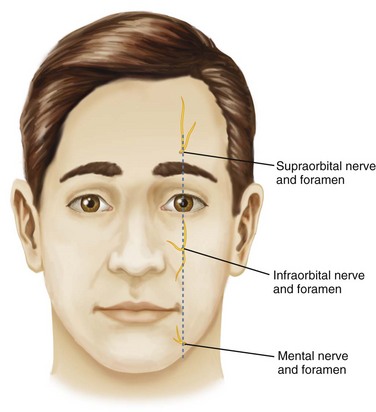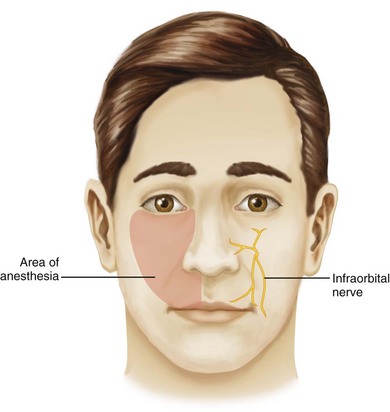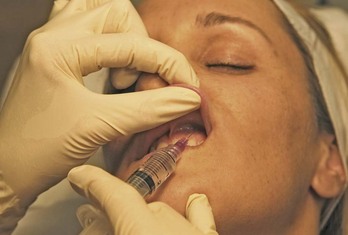20 Anesthesia for Cosmetic Procedures
Providing adequate anesthesia is an essential part of performing cosmetic procedures and successfully incorporating them into practice. In addition to offering the patient a better procedural experience, minimizing discomfort ensures greater treatment precision and may improve outcomes.1 Cosmetic treatments that commonly require anesthesia include laser treatments, such as ablative skin resurfacing, tattoo removal and hair reduction, dermal filler injections, and occasionally botulinum toxin injections.2
Four anesthesia modalities are commonly used with cosmetic procedures:
The anesthetic modality chosen is dependent on the discomfort level associated with the procedure, procedure duration, and patient tolerance for pain. Anesthesia for less painful procedures, such as botulinum toxin and laser hair reduction, can be accomplished with contact cooling using ice or a contact cooling device and topical anesthetics. More painful procedures such as dermal fillers typically require injectable anesthetics, and prolonged procedures, such as ablative laser resurfacing, often require a combination of methods such as topical anesthetic, oral analgesic, and cool air blower (see Table 20-1).
TABLE 20-1 Anesthetic Modalities Used for Cosmetic Procedures
Anesthetic Modalities | Cosmetic Procedures |
|---|---|
| Injectable anesthetics | |
| Local infiltration | Dermal fillers Laser tattoo removal |
| Regional block | Dermal fillers Ablative lasers |
| Topical anesthetics | Botulinum toxin Dermal fillers Laser hair reduction Laser tattoo removal Laser photorejuvenation for pigmented lesions Ablative lasers |
| Contact cooling | Botulinum toxin Dermal fillers Laser hair reduction |
| Analgesic devices | Laser hair reduction Ablative lasers |
Injectable Anesthetics
Injectable lidocaine (1% to 2%) reduces pain by blocking neural cell membrane sodium channels and inhibiting impulse propagation. Initially, small delta nerve fibers, which are responsible for pain and temperature sensations, are blocked. Larger beta nerve fibers, which are responsible for pressure and vibration, take longer to anesthetize. For this reason, injectable anesthetics have a rapid reduction of pain but a slower reduction in sensations of pressure and pulling.3
Lidocaine may be buffered with sodium bicarbonate in a 1 : 8 or 1 : 10 ratio to reduce the burning sensation upon injection of anesthetic. See Chapter 3, Anesthesia, for information on side effects and toxicity with lidocaine and alternative options for lidocaine allergic patients.
Local Infiltration
Lidocaine with epinephrine is typically used for infiltration with cosmetic procedures because a rapid onset of anesthesia is desirable, as is the associated vasoconstriction and reduced risk of bruising associated with epinephrine. Anesthetic infiltration results in tissue edema and distortion. Care should be taken to inject the smallest possible anesthetic volumes necessary when using local infiltration for cosmetic procedures. See Chapter 3, Anesthesia for local infiltration injection techniques.
Local infiltration is commonly used to provide anesthesia for dermal filler treatments and may be used for patients who cannot tolerate laser tattoo removal. Anesthetic infiltration significantly lengthens the time of treatment, and some providers suggest that edema caused by local infiltration may reduce the efficacy of laser tattoo treatments (see Chapter 30, Tattoo Removal with Lasers).
Regional Nerve Blocks
Lidocaine without epinephrine is used for nerve blocks. Facial nerve blocks are beneficial for cosmetic procedures because anesthetic is placed outside of the treatment area. Profound anesthesia can be achieved with minimal distortion of the treatment area, which is particularly useful with dermal filler treatments.2,4 Nerve blocks are also useful for painful procedures such as ablative laser resurfacing, particularly in the sensitive perioral area.
Infraorbital and mental nerve blocks are most commonly used with facial cosmetic procedures. The locations of the infraorbital and mental nerves are shown in Figure 20-1 and can be identified by palpating the nerve foramina. The infraorbital and mental nerves lie along a vertical line extending from the supraorbital notch to the mandible. The supraorbital notch lies along the upper border of the orbit and is palpable approximately 2.5 cm lateral to the midline of the face. The infraorbital foramen is palpable approximately 1 cm inferior to the infraorbital bony margin, and the mental nerve is palpable just above the margin of the mandible.
Infraorbital Nerve Block
The infraorbital nerve innervates most of the upper lip, lower eyelid, lateral portion of the nose, and medial cheek. An infraorbital nerve block can anesthetize all of these regions (Figure 20-2).3 The intent of the infraorbital nerve block technique described here, utilizing a short 0.5-inch needle, is to reach the distal portions of the infraorbital nerve, not the nerve foramen, which would require a longer needle (approximately  inches long). The philtrum and the corners of the mouth are typically poorly anesthetized with infraorbital blocks, and additional local infiltration is also required when treating these areas.
inches long). The philtrum and the corners of the mouth are typically poorly anesthetized with infraorbital blocks, and additional local infiltration is also required when treating these areas.
Procedure Steps












